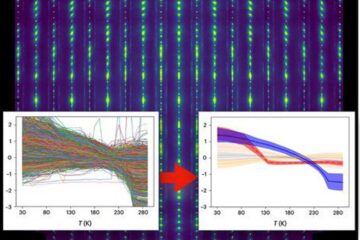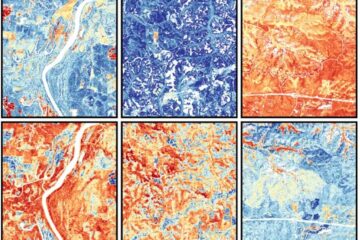Novel cancer drug reduces neuroblastoma growth by 75 percent

Researchers from the Children's Cancer Hospital at The University of Texas M. D. Anderson Cancer Center have found a new drug that restricts the growth of neuroblastoma, a childhood brain cancer. The pre-clinical study was presented today in the plenary session at the 22nd annual meeting of the American Society of Pediatric Hematology/Oncology.
Alejandro Levy, M.D., fellow at the Children's Cancer Hospital at M. D. Anderson, presented research showing for the first time that the M. D. Anderson-developed drug, 3-BrOP, reduces tumor growth by more than 75 percent as a single agent. The study, conducted with human neuroblastoma cells transplanted into mice, showed how 3-BrOP, a glycolysis inhibitor, starved the cancer cells to death by shutting down their main energy source, glucose.
“We found that neuroblastoma cells, unlike healthy cells, are highly dependent on glycolysis for energy instead of more efficient means of energy production,” said Levy. “Glycolysis is a process that breaks down sugar for energy, so by blocking that process with 3-BrOP, we are able to keep the tumors from producing energy, and this disrupts their ability to grow.”
According to the American Cancer Society, approximately 650 children, mainly under the age of five, are diagnosed with neuroblastoma in the United States each year. Close to two-thirds of these children are diagnosed after the cancer has metastasized to other parts of the body. For these patients with high-risk neuroblastoma, long-term survival is less than 40 percent because the tumors are often resistant to traditional chemotherapy.
Pre-clinically, 3-BrOP has already been proven effective against other cancers including glioblastoma, colon cancer, lymphoma and acute leukemia. A Phase I clinical trial is planned to open this year for adult patients.
“As we explore alternative options to standard chemotherapy agents, we are finding drugs, like 3-BrOP, that have the potential to destroy cancer cells while leaving healthy cells unharmed,” said Patrick Zweidler-McKay, M.D., Ph.D., assistant professor at the Children's Cancer Hospital and senior investigator of the study. “These drugs can often enhance the efficacy of other treatments, potentially leading to more successful combinations and better outcomes for our young patients.”
Other investigators on the study were Lauren Akers, D.O., Maurizio Ghisoli, M.D., Timothy Graham, Lizhi Zeng, M.D., Riitta Nolo, M.D., Peter Zage, M.D., Ph.D., Wendy Fang, M.D., Sankaranarayanan Kannan, Ph.D., Anna Franklin, M.D., Peng Huang, M.D., Ph.D., and Patrick Zweidler-McKay, M.D., Ph.D.
About M. D. Anderson
The University of Texas M. D. Anderson Cancer Center in Houston ranks as one of the world's most respected centers focused on cancer patient care, research, education and prevention. M. D. Anderson is one of only 40 comprehensive cancer centers designated by the National Cancer Institute. For four of the past six years, including 2008, M. D. Anderson has ranked No. 1 in cancer care in “America's Best Hospitals,” a survey published annually in U.S. News & World Report.
About the Children's Cancer Hospital at M. D. Anderson
The Children's Cancer Hospital at The University of Texas M. D. Anderson Cancer Center has been serving children, adolescents and young adults for more than 50 years. In addition to the groundbreaking research and quality of treatment available to pediatric patients, the Children's Cancer Hospital provides its patients with comprehensive programs that help the children lead more normal lives during and after treatment.
Media Contact
More Information:
http://www.mdanderson.org/childrenAll latest news from the category: Health and Medicine
This subject area encompasses research and studies in the field of human medicine.
Among the wide-ranging list of topics covered here are anesthesiology, anatomy, surgery, human genetics, hygiene and environmental medicine, internal medicine, neurology, pharmacology, physiology, urology and dental medicine.
Newest articles

Machine learning algorithm reveals long-theorized glass phase in crystal
Scientists have found evidence of an elusive, glassy phase of matter that emerges when a crystal’s perfect internal pattern is disrupted. X-ray technology and machine learning converge to shed light…

Mapping plant functional diversity from space
HKU ecologists revolutionize ecosystem monitoring with novel field-satellite integration. An international team of researchers, led by Professor Jin WU from the School of Biological Sciences at The University of Hong…

Inverters with constant full load capability
…enable an increase in the performance of electric drives. Overheating components significantly limit the performance of drivetrains in electric vehicles. Inverters in particular are subject to a high thermal load,…





















